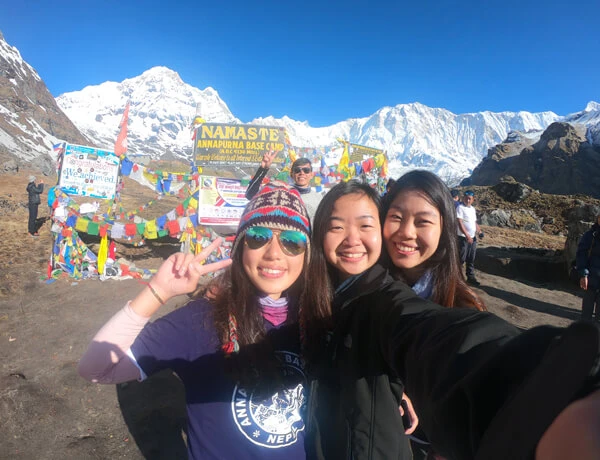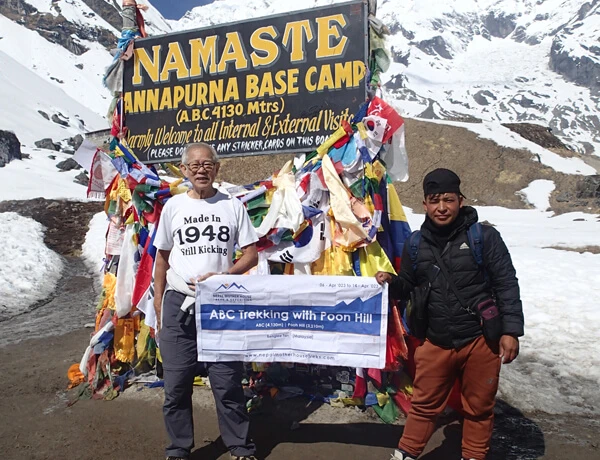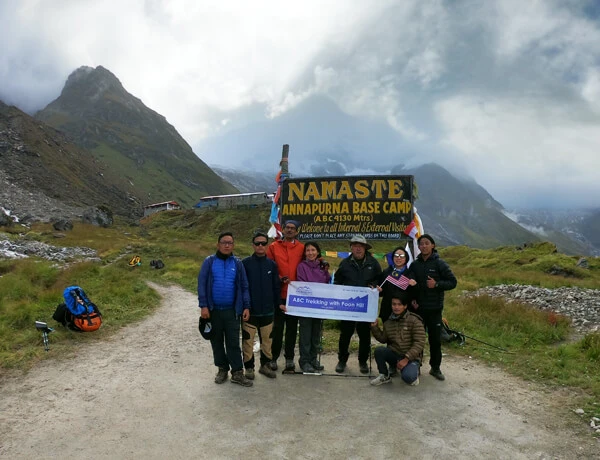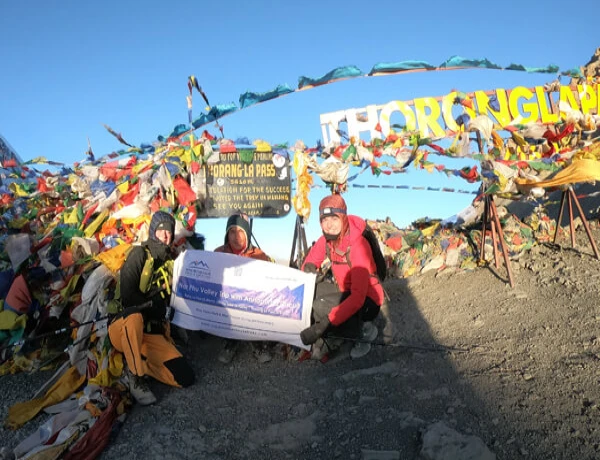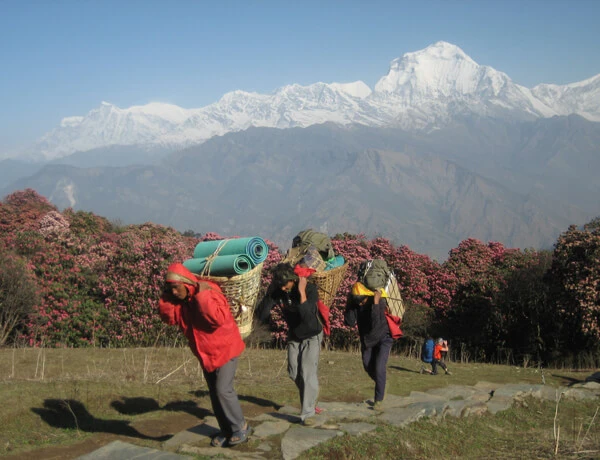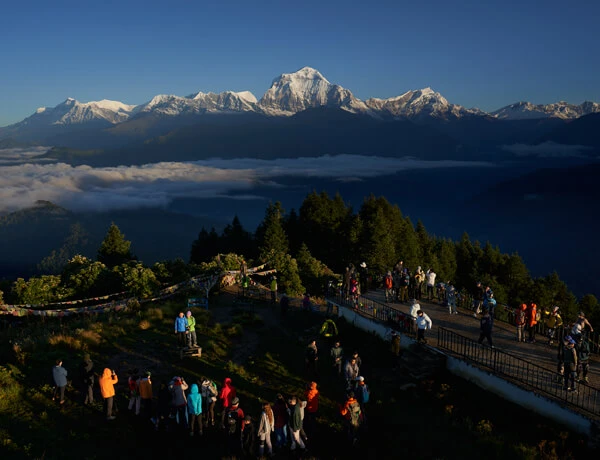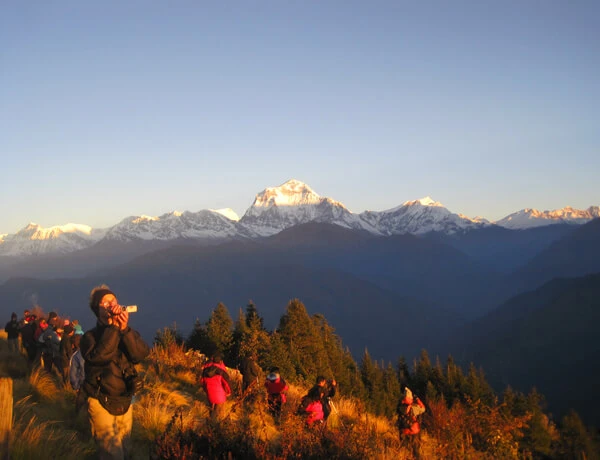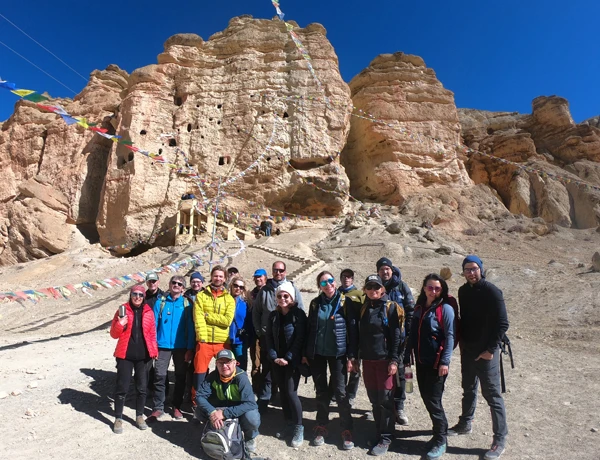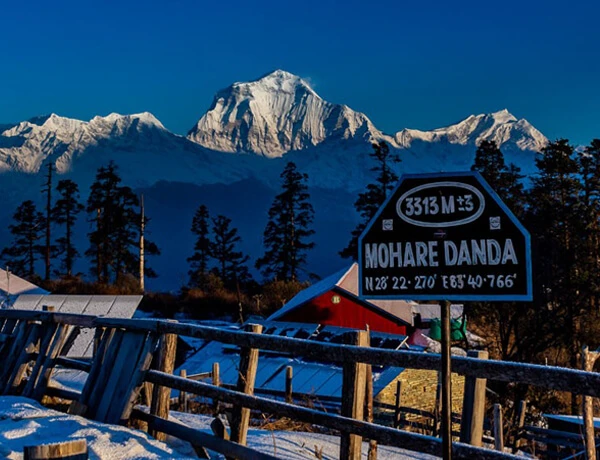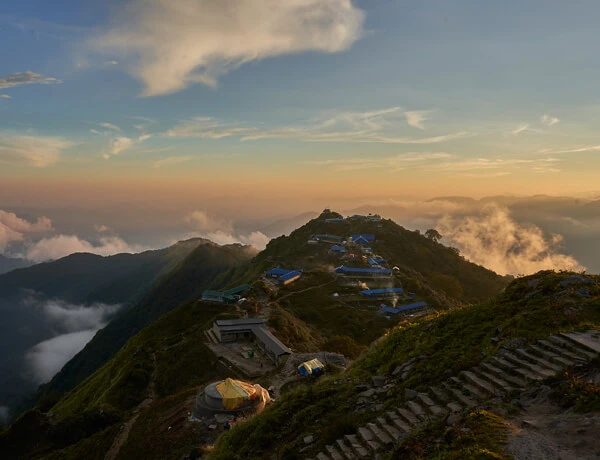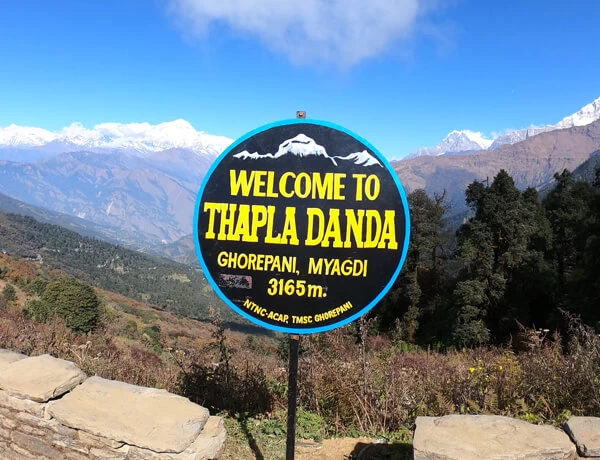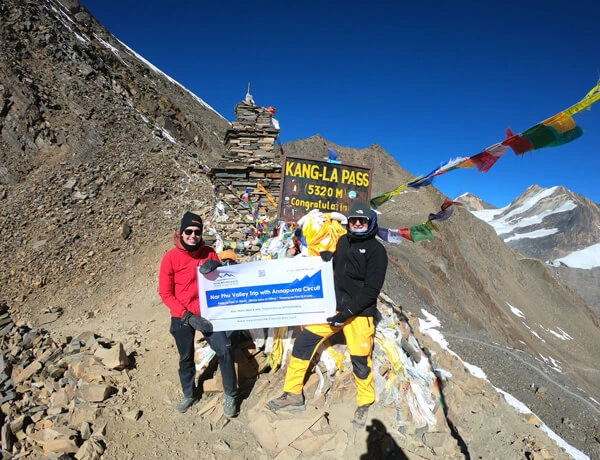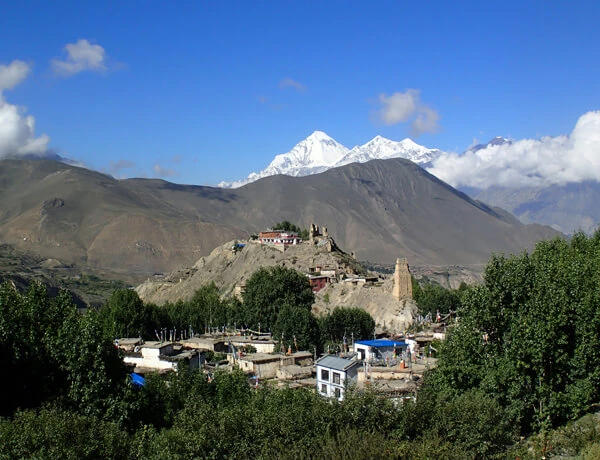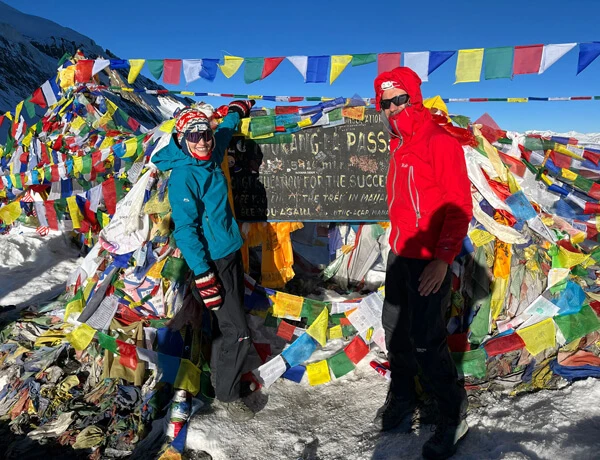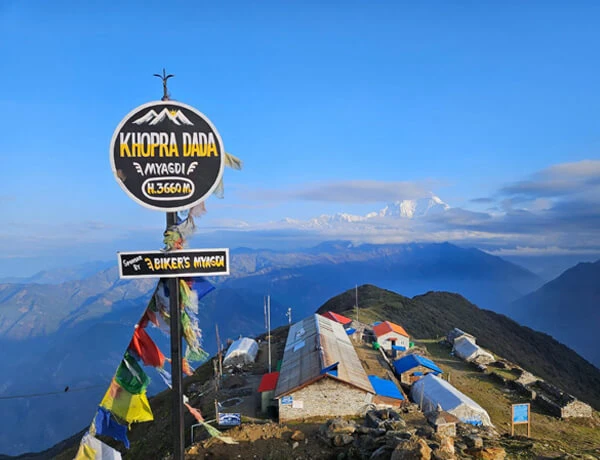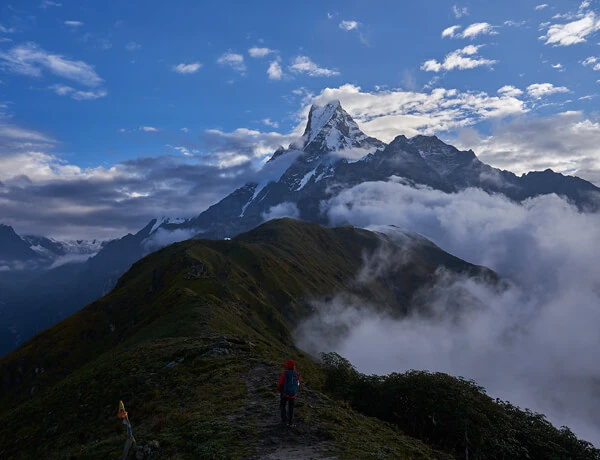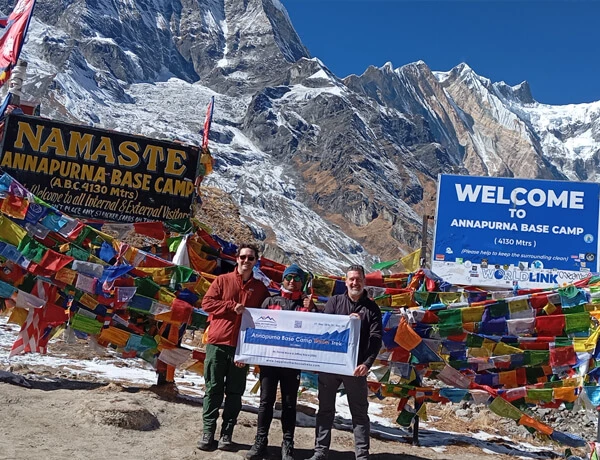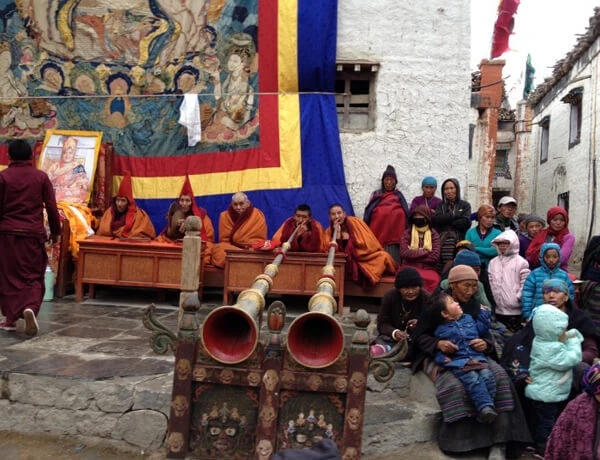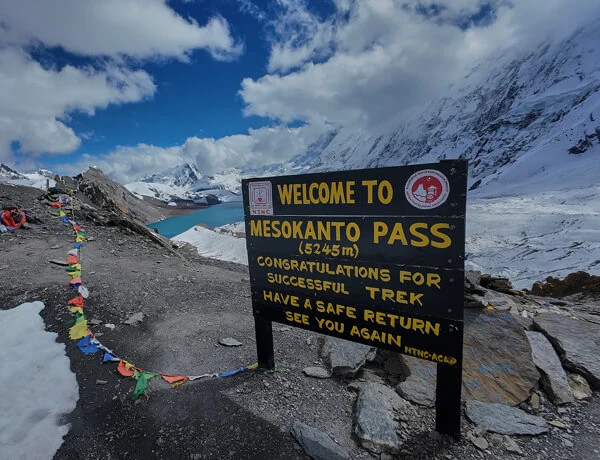Grand chain with short-of-breath atmosphere of the characteristics… … completely limits the kind of enchanting spell… ...
The Annapurna Trek is one of the best trekking destinations in the world. The trekking trail goes through the lap of the Annapurna Himalaya Range. There are many trekking routes in the Annapurna Region. Trekking in the Annapurna region is particularly enjoyable, as this circuit is considered to be the easiest among various alternative trekking destinations. It’s set inside the western part of the Asian nation and incorporates ranges around Annapurna that fluctuate, mountain crests that differ, and the Kali Gandaki watercourse valley. As a classic trekking route, this area attracts visitors year-round for trekking activities. This location boasts the most diverse and least complex vegetation, which trekkers can withstand throughout their journey to reach this magnificent destination. One will trek this area in some shapes, like Annapurna trekking, Annapurna circuit trekking, Annapurna Sanctuary trekking, Annapurna base camp trekking, Ghorepani Poon Hill Trek, and so on. There are different angles throughout this area to investigate, like the Annapurna Conservation Area Project (ACAP), which yearns for a doorway permit and a TIMS card to enter.
During the journey on crisp mornings, one has the opportunity to witness truly distinctive mountain peaks such as Annapurna I (8,091 m), Nilgiri (7,061 m), and Machhapuchchhre (6,993 m). This area is known for its varying trek durations, ranging from long to short, and to the north, we can observe the Trans-Himalayan regions inhabited by people influenced by Tibetan culture. As this space is discovered amidst two zones, i.e., Gandaki and the mountain top, we will perceive numerous regions underneath this Annapurna locale, like Baglung, Kaski, Lamjung, Manang, Mustang, and Myagdi. Owing to these diverse regions, one will master various societies and tenets once passing through distinctive trails within this district.
One gets an opportunity to get some insight and data on one trek concerning convention, society, history, and likewise human progress. This could be a once-in-a-lifetime opportunity for every traveler to return and visit this place, measure the ways with the strides, and live the entire track. Here, one will even feel the religious fervor once moving to the universe of Muktinath, which is unbelievable for Shaligrams, which are affirmed to be the appearance of the Hindu god Vishnu. Generally, this area offers everything for everyone. One should return to trek this place for the last word of finesse and fulfillment. The Annapurna Hike is the most amazing activity for any trekker, as it has a lot to offer everyone.
Revealing Annapurna's Magnificent Beauty via Trekking: A Lifetime Travel Guide
Set off on a transforming journey across the breathtaking Annapurna region and find the unmatched splendor waiting for adventurous walkers. Under the title "Unveiling the Majestic Beauty of Annapurna Through Trekking: A Journey of a Lifetime," this essay captures the core of a trip that goes beyond simple discovery in the Conservation Area Project (ACAP). As they create a hypnotic backdrop for your journey, soaring peaks, gushing waterfalls, and vivid rhododendron woods will enthrall you. Every step you take on difficult paths and in little towns reveals a fresh chapter in this immersive experience that provides insights into both the magnificence of the surroundings and the friendly warmth of the local people. Whether your search is for a soul-stirring communion with nature or an exciting challenge, the Annapurna walk guarantees an amazing adventure that will imprint itself deeply into your memory and call you back time and time again. Let us start this wonderful trip together.
The allure of the Annapurna trek
Trekkers from all around the world come to the Annapurna area, a hiker's paradise with its amazing scenery and varied ecosystems. Adventurers and environmental enthusiasts will be enthralled by a visual feast created by towering peaks, colorful valleys, and calm lakes. From the majestic Annapurna Massif to the little towns tucked away in the hills, every bend on the trail exposes a fresh work of natural beauty. This area appeals to its breathtaking surroundings and air of adventure. Every stride taken on Annapurna's rocky pathways transports one into the heart of the Himalayas, where the spirit of discovery wakes.
Trekkers are surrounded by a beautiful tapestry of flora and fauna as they travel through the area. Among the many species found in the Annapurna Conservation Area are the Himalayan tahr and the elusive snow leopard. During the spring,rhododendron forests explode in a rainbow of hues, hugging trail hikers in a scentful embrace. Furthermore, the diverse heights offer a special chance to experience several climatic zones, ranging from subtropical climates at lower elevations to the alpine conditions found close to the snow-capped mountains. This amazing biodiversity improves the trekking experience and gives every time spent in the Annapurna area an opportunity to connect with the surroundings.
The Annapurna region's cultural diversity provides still another appeal. Trekkers come across friendly local villages, each with its distinct customs and history. Among others, the Gurung and Magar people give explanations for their way of life and highlight the harmonic coexistence they have with the earth. Visitors can take part in age-old ceremonies, enjoy local celebrations, and even try traditional cuisine. This cultural immersion turns the hike into a whole trip that combines the discovery of the vivid human tapestry that lives among the mountains with the study of the surroundings. Trekking in Annapurna is a wonderful journey combining breathtaking scenery with rich cultural encounters.
Annapurna trekking routes and difficulty levels
There are several hiking paths in the Annapurna area, each one providing a different experience catered to varying degrees of expertise and inclination. A popular choice with excellent variation and amazing vistas is the traditional Annapurna Circuit. Depending on the variations made, this journey, which spans from 160 to 230 kilometers, usually takes 12 to 20 days. Trekkers will negotiate rich valleys, cross steep mountain passes, and come across a dynamic mix of civilizations along the way. For individuals with modest degrees of fitness and a spirit of adventure, the circuit is challenging but doable.
The Annapurna Base Camp walk is a wonderful choice for those looking for a less demanding experience. Usually lasting between 5 and 12 days, this journey spans over 115 kilometers. Families and beginners would find the less difficult and well-marked trail appropriate. At the Annapurna Base Camp, where breathtaking panoramic vistas of the Annapurna Massif encircle walkers, the trip ends. Without the long-term commitment needed for the circuit, this walk is a great introduction to the beauty of the area, thanks to its rather low height and shorter duration.
The Annapurna Sanctuary trek gives experienced hikers seeking a more isolated experience an opportunity to explore less-traveled routes. Along with fewer well-known communities and immaculate scenery, this walk leads to the amazing Annapurna Sanctuary. The steep and challenging nature of the paths calls for more experience and physical ability. Nonetheless, the benefits are outstanding since travelers enjoy the peace of an unspoiled environment and the excitement of standing among tall mountains that appear to reach heaven. Whatever the path taken, every trip in the Annapurna area guarantees a wonderful experience reflecting the grandeur of the Himalayas.
Essential gear and preparation for the Annapurna trek
Getting ready for an Annapurna trek means giving serious thought to the tools and equipment needed to guarantee a comfortable and safe trip. A pair of durable trekking boots is among the most important items of kit. Well-fitting, waterproof boots give your feet the support and protection they need when negotiating rough ground. Moreover, gaiters and moisture-wicking socks can help keep your feet dry and comfy, avoiding blisters and other uncomfortable effects. To keep endurance and fully enjoy the hiking experience, one must have proper shoes and other trekking equipment.
Still, another vital component of readiness is attire. Temperatures in the Annapurna area can be erratic, ranging greatly from day to night. The key is layering; breathable base layers, insulating mid-layers, and waterproof outer layers will let you change with the seasons. At higher altitudes, a good-quality down jacket and thermal gloves might help keep you warm on cool evenings. To guard against the strong sun at altitude, kindly remember a wide-brimmed cap and sunglasses. Trekking comfort can be greatly improved by wearing appropriate gear.
Apart from shoes and clothes, other important tools are a hydration system, a sturdy backpack, microspikes, and trekking poles. A well-fitting, comfortable backpack will aid in equally distributing weight, therefore lowering your body's strain. On uneven ground, trekking poles can provide stability and assist in reducing knee pressure during descents. Being hydrated is critical; hence, think about using easily available water bottles or a hydration bladder. Finally, never undervalue the need for a first aid kit, sunscreen, and personal cleanliness tools. Good planning will improve your hiking experience and free you to concentrate on the amazing Annapurna region's beauty. You can buy or rent all that trekking gear in various categories in Kathmandu. If you need help, we at Nepal Mother House are glad to assist you.
Accommodation and dining options along the Annapurna trek
There are a lot of lodging choices that fit different budgets and tastes when you start your hiking journey in the Annapurna area. Along well-traveled paths, tea houses are the most often used kind of accommodation. These family-run businesses provide basic conveniences like food and a bed, therefore fostering a comfortable environment for hikers to relax and refuel. The generosity of the local hosts enhances the experience since they sometimes provide knowledge about their culture and way of life.
Certain places provide upscale hotels and resorts for visitors looking for a more luxurious experience. Usually containing private rooms and en-suite bathrooms, these lodgings provide more pleasant conveniences. Although they could be pricier than conventional tea houses, they offer a better degree of luxury and service, which lets hikers relax in elegance following a tough day on the paths. Whichever kind of lodging one chooses, staying in the local businesses supports the mountain communities and sustainable travel.
There are several food choices along the trail, with menus ranging from local to international cuisine. Trekkers love traditional Nepali meals for their nutritional worth and energy-boosting qualities, like dal bhat (lentil soup with rice). Many tea houses also have Western cuisine available, such as pancakes, sandwiches, and pasta. Use the chance to taste regional delicacies and seasonal ingredients while you hike to improve your gastronomic taste and learn about the flavors of the area. Eating meals with local hosts and other hikers strengthens friendships and enhances the trip; every meal will be unforgettable on your Annapurna trip.
Ethnographic insights and cultural experiences during the Annapurna trek
Trekking in the Annapurna area is a special chance to experience the rich cultural legacy of the nearby people. The Gurung, Magar, and Thakali peoples—each with unique customs and traditions—along with other ethnic groups, call this area home. Along the paths, you will come across little towns where you can see daily life, from lively celebrations to age-old farming methods. Interacting with residents offers insightful analysis of their way of life and helps one to appreciate the cultural fabric of the Annapurna area.
One of the highlights of your trip can be taking part in cultural events and ceremonies. Many communities honor regional celebrations, including Tihar and Dashain, which provide a window into their rich customs. Participating in the celebrations lets walkers personally enjoy the kindness and friendliness of the residents. Furthermore, native guides often tell tales and traditions connected to the mountains, therefore enhancing the trekking experience by helping one to establish a connection to the ground and past. These interactions provide lifelong memories and a profound respect for the local cultural diversity.
Furthermore, scattered around the Annapurna area are historic monasteries and spiritual sites reflecting the strong Buddhist and Hindu traditions of the region. Seeing these hallowed sites offers a calm environment for introspection and spiritual connection with the mountains. Many hikers find help in the peace of these places, where prayer flags flap in the breeze and chanting fills the air. Finding the spiritual and cultural facets of the Annapurna area enhances the hiking experience and turns it into a changing trip that links you to the core of the Himalayas.
Safety tips and precautions for the Annapurna trekking
Starting a trekking excursion in the Annapurna region calls for safety first. Acclimatization is among the most crucial factors one should take into account. Anyone, regardless of degree of fitness, may have altitude sickness in high-altitude surroundings. Ascending gradually will help you reduce this risk by letting your body adapt to different heights. To guarantee appropriate acclimatization, especially at higher altitudes, it is important to schedule rest days during the walk. Learning the signs of altitude sickness—such as headaches, nausea, and dizziness—is crucial; however, knowing your body's signals will help avoid major problems.
Keeping current on the Annapurna region's weather is another essential safety precaution. The weather changes quickly; hence, hikes should be scheduled with consideration for flexibility. Please review the weather forecast and prepare for sudden changes in temperature and precipitation before beginning each day. Stocking suitable clothing, such as thermal layers and raincoats, guarantees that you will be ready for any kind of weather. Trekking under a trustworthy guide can also improve safety since they have local expertise and can decide on route conditions and weather patterns with wisdom.
Last but not least, during trekking, general well-being depends on keeping correct nutrition and hydration. Enough water helps avoid dehydration, which aggravates altitude sickness effects. Bringing iodine pills or water-purifying equipment guarantees access to healthy drinking water all along the walk. Equally vital is fueling your body with a healthy diet; keep your energy levels high by including dried fruits, energy bars, and nuts—energy-dense foods. Trekkers can enjoy the beauty and adventure the Annapurna trek presents by giving safety and well-being a top priority.
Capturing Annapurna's beauty: Photography tips.
Capturing the Annapurna region's breathtaking magnificence calls for both technical ability and artistic vision. In these wonderful surroundings, one of the most crucial pieces of advice for photography is to pay attention to lighting conditions. For optimal natural light for photography, the golden hours of sunrise and sunset are present. While sunset creates a mystical glow over the mountains, early morning walks can provide you with lovely, diffused light illuminating the summits. Arranging your photography trips around these periods will produce breathtaking pictures that capture the beauty of the surroundings.
Composition is another key factor. Including features of the scene, such as foreground interest, will provide your image context and depth. Lead the observer's eye throughout the picture using leading lines, such as rivers or trails. Including local people or animals in your images will also help your photography to convey a better tale. Recording unguarded events of people living their daily lives or yaks grazing in the pastures can help one connect with the Annapurna region's environment and culture.
Remember also to guard your equipment while trekking. Photographers may have difficulties on rocky ground and in changing weather conditions. Using lens covers and a weather-resistant camera case, you can protect your gear from dust and rain. Considering the rapidly declining battery life in cold conditions, you should also carry extra batteries. By investing time to arrange your photography technique and maintain your equipment, you will be able to capture the breathtaking grandeur of the Annapurna area in all its splendor, therefore generating lifelong memories of your trekking trip.
Sustainable tourism practices in the Annapurna region
Trekking's rising popularity in the Annapurna region calls more attention to the need for environmentally friendly travel policies. Trekkers owe it to their surroundings to reduce their influence and benefit nearby towns. Following the "Leave No Trace" ideas, which include packing out all waste, utilizing biodegradable items, and lowering noise pollution, is one of the most efficient ways one may practice sustainability. Being aware of your impact will enable you to help the Annapurna scenery remain immaculate for the next generations.
Another vital component of sustainable travel is helping nearby companies and communities. Choosing to eat local food, visit family-run tea houses, and pay local guides enhances your trip. It guarantees that the financial gains from travel go directly to the towns ready to welcome you. Buying handcrafted goods and interacting with nearby artists helps to preserve the cultural legacy and gives local households income. Through their choice to support the local economy, trekkers significantly help to promote sustainable practices in the area.
Moreover, starting to encourage environmental preservation will help to maximize the benefits of your stay. Many companies put forth great effort to save the delicate Annapurna area ecosystems. Trekkers can help by supporting local clean-up projects or raising knowledge of the need for maintaining biodiversity. Trekkers may make a long-lasting impact on the lives of both visitors and local people by supporting sustainable tourism practices and environmental advocacy, therefore helping to ensure that the great beauty of Annapurna stays unaltered for the next generations.
Reflecting on the transformative journey of the Annapurna trekking
It is evident, as you stand among the Annapurna region's highest mountains, that this trip goes beyond just physical activity. The experience is a profound investigation of self, culture, and environment. Every stride you make on the paths links you to the past and stories buried in the ground, therefore transcending mere movement across space. Trekkers are permanently changed by Annapurna's breathtaking beauty, which not only alters their viewpoint but also their awareness of the surroundings.
The trip is much enhanced by the friendly contacts with local communities and the friendships developed among other hikers. Stories, jokes, and dinners shared with people you meet along the road forge relationships that sometimes last a lifetime. These ties and the breathtaking scenery help one feel appreciated for the common human experience and like they belong. The Annapurna walk reminds us of the beauty of diversity, the power of community, and the need to conserve our natural and cultural legacy.
Trekking over the Annapurna area is ultimately an invitation to explore the core of adventure and the beauty of life itself, not only a physical struggle. Whether your attraction is the mountains, the diversity of the culture, or the excitement of discovery, this trip offers a transforming experience that stays with you long after the walk ends. You might find yourself yearning to go back to the wonderful embrace of Annapurna, where every journey marks a fresh chapter in an ongoing experience as you consider the memories made, the lessons learned, and the beauty observed.
Come and be a part of Nepal Mother House for brilliant relaxation in the Annapurna Trek area. Our toughened and overall qualified aides and watchmen can aid you in investigating this space without bounds. Whether it’s Annapurna Trekking in Nepal or Annapurna Trip, we provide every service to our clients joining us. As we tend to accept that our customers' fulfillment is our fulfillment, our administrations conjointly emerge with a consistent trademark to be the least complex by serving with perfect facilities according to our clients' needs.
